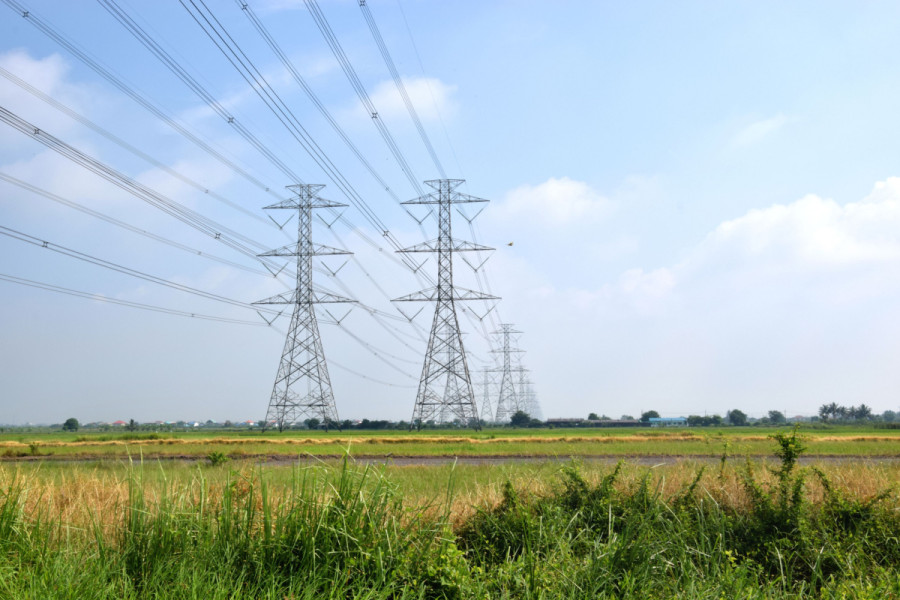Columns
Reforming the power sector
Withdrawal of the Electricity Bill, 2020 is a regressive step that will delay reforms in power sector in Nepal.
Saroj Koirala
On September 16, 2022, the Minister for Energy, Water Resource and Irrigation’s proposal to withdraw the Electricity Bill, 2020 was passed by the National Assembly, thus eliminating the possibility of any electricity-related legislation being enacted anytime soon. This Bill was expected to provide a statutory basis to further major reform activities in Nepal’s power sector and its withdrawal marks a major impediment for the sector, which has been yearning to attain new heights after Nepal’s recent progress in its electricity generation capacity.
The power sector reforms include activities like corporatisation of utilities, deregulation and delicensing, open access to transmission infrastructures, unbundling of vertically integrated utilities, privatisation of utilities, competition in wholesale and retail, restructuring of a distribution utility into smaller utilities, renewable energy integration, etc. In a nutshell, power sector reforms are frequent, if not continuous, processes oriented towards decreasing prices, maintaining price stability, and increasing the reliability of electricity. The Electricity Bill had proposed, among other things, to unbundle Nepal Electricity Authority (NEA), recognise power trade and electricity supply services as licensed activities, introduce competition in development and operation of electricity projects, and delicense captive generators. Additionally, the bill, upon enactment, provided the needed push for the operationalisation of open access, which has been delayed only because of uncertainty prevailing at the regulatory or policy levels.
Nepal has had a very structured electricity sector since the enactment of the Nepal Electricity Authority Act 1984, which provided monopoly powers to NEA for generating, transmitting, and distributing electricity. Later, the Electricity Act 1992 opened the doors to some reforms, like allowing entry of the private sector into the electricity sector and providing for a separate entity for consumer tariff determination. For long, the electricity markets in most countries were dominated by vertically integrated monopolies, and an independent regulator would determine tariffs chargeable by them. Competition in the electricity industry was practically non-existent as the competition often meant building parallel infrastructures in the same area, which increased risks for investors and costs for the end-consumers. But, as the electricity legislation was being implemented in Nepal, the global landscape pertaining to electricity was changing, and many countries had begun pushing for reforms which included unbundling and wholesale and retail competition. The importance of these reforms for Nepal was also realised immediately, but it was the height of the energy crisis in the early 2010s that necessitated some conclusive action.
After lurching and meandering for over two decades, Rastriya Prasaran Grid Company and Vidyut Utpadan Company were established in 2015 and 2016, respectively by the Government of Nepal as to-be successors of NEA’s transmission and generation businesses, respectively. The formation of these companies, without a statutory compulsion to unbundle, seemed like a decisive step towards restructuring NEA. However, the recent political discord and ambiguity of the subject in the political sphere prevented the passage of the Electricity Bill, which would otherwise have provided the legal impetus for power sector reforms.
Despite the dilemma at the political level, Nepal’s necessity for these reforms cannot be overstated. Unbundling of NEA will lead to the formation of smaller utilities that shall carry out separate designated functions with higher operational efficiencies. Additionally, it will bring about transparency and reduce any preferential treatment that tends to limit competition. NEA’s improving balance sheet, thanks partly to the recent growth in generation capacity and improved cross-border connectivity, might have eclipsed the urgency of restructuring for the time being. However, Nepal mustn’t lose sight of the fact that unbundling of NEA was envisioned to deliver higher reliability and price-stability of electricity to end-consumers.
Another pertinent reform proposed by the Electricity Bill was the development and operation of power projects through competition. Although NEA has been able to sell surplus electricity at a reasonable price through the Indian Energy Exchange (IEX), high generation tariffs might still pose threat to Nepal’s prospects, both domestically and abroad. The current method of generation tariff determination adopted by the Electricity Regulatory Commission (ERC) is reminiscent of how NEA determined the generation tariffs in the past and how it doesn’t incentivise developers to build power projects efficiently. However, mechanisms based on competition may offer chances to reduce generation tariff, likely through prioritisation of construction of cheaper projects.
Licensing of power traders and electricity suppliers and delicensing of captive generation projects are particularly important for bringing about competition and offering more choices to consumers. Currently, NEA is the sole off-taker of electricity in Nepal, and it has been selling electricity within and outside the country. However, licensing of power traders and electricity suppliers and delicensing of captive generators shall offer more channels for power to be traded both here and abroad.
To sum up, the electricity bill had sought to replace a structured power market with a more complex one, but while doing so, it could provide opportunities for alternate business models to flourish, which, in turn, would encourage innovation and increase competition. While the perils of drastic steps to the reform electricity industry should not be underestimated, as sometimes, they can even exacerbate the problems. By now, there are enough examples for Nepal to take lessons from. California, in the late 1990s, deregulated the electricity market in favour of competition in an attempt to reduce its wholesale price of electricity. This not only failed to reduce the wholesale price, it also led to the biggest utility in California filing for bankruptcy. Similarly, in the UK, past attempts of reform have failed to keep electricity prices low in the long run and have failed to curb the monopoly influence of utilities. In the case of India, different states are in different stages of reform, and while Delhi and Maharashtra are showing considerable progress after the restructuring of the electricity market, other states like Bihar and Uttar Pradesh are still lagging. Nepal can closely examine such examples and chart its course accordingly so that the country doesn’t suffer the same fate. Since Nepal has already established the ERC, it must be empowered to ensure that these reforms are carried out securely.
The current Electricity Act 1992 is often hailed as a success in promoting private sector participation in electricity generation, but it did have its shortcomings. The private sector wasn’t actually encouraged by the merit of the act alone but by the government’s policy to offer concessions to the power projects after the advent of the energy crisis in the early 2010s. The act’s restrictive provisions also didn’t allow new business models to flourish and may be partly deemed liable for the crisis. So, further delays to enact appropriate electricity legislation may cause Nepal to lose various opportunities or worse, bring in new problems. In light of the government of Nepal having recognised electricity as a conveyor of the prosperity of the country and because these reforms must not be further delayed, there is a need for Nepal to prioritise power sector reform as a matter of national priority. The subject must remain above petty political squabbles and the government must proactively work to foster consensus among all stakeholders. The enactment of a new electricity legislation should be the bottom-line of such consensus. The House of Representatives election, which is just around the corner, can be an opportunity for the political leadership to initiate meaningful dialogues and show commitment in this matter.




 18.12°C Kathmandu
18.12°C Kathmandu















